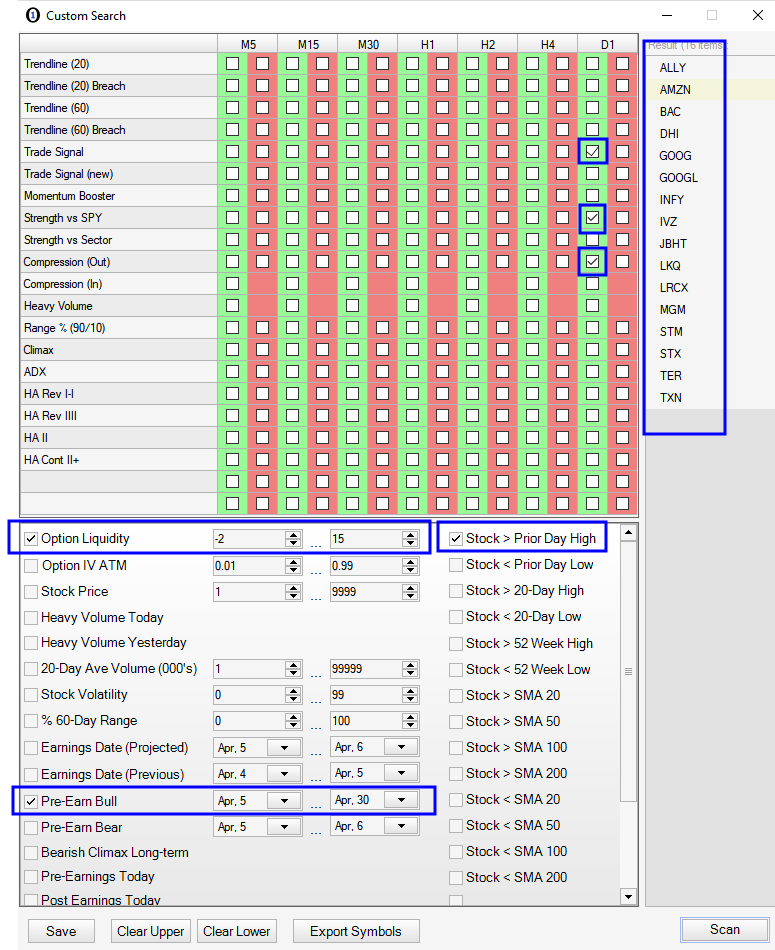Question
What do you think of an option trading strategy that buys stocks with good fundamentals and then sells LEAPS against them? What would be the downside risk on the trade?
Answer
That is an excellent question. This is one of the more conservative “investment” strategies. Notice, I said investment strategies not option trading strategies.
The key to successful investing is to pick excellent stocks. I look for companies that are growing revenues and earnings. I like to see a solid balance sheet with fairly low debt levels. Cash means flexibility and the company is able to buy back shares, increase dividend payments, or make a strategic acquisition. All are good for the stock price. I also look for companies that have a competitive advantage. That could be brand awareness, a patent, high barriers to entry, ownership of scarce resources or any other number of possibilities. Their edge will keep competitors at bay and they will not have profit margins that are continually being squeezed. You also need to make sure that the long-term macro business conditions are intact. If all of these elements are present, you have a solid investment provided that the shares trade at a resonable valuation.
You have a candidate and you decide to buy the stock. You also decide to protect your downside by selling long-term out of the money calls against the shares. Options that have more than six months of life are called LEAPS. Let’s say the stock is trading at $38 and it pays an annual 2% dividend. Let’s also say that the Jan (2009) $40 calls have 18 months of life and they can be sold for $4.
The person who buys the call has the right but not the obligation to buy the stock at a specified price ($40) within a specified period of time (January 2009). If the stock is above $40 at expiration they will exercise their right to buy the shares at that price. As the seller of the call, you have no rights – just obligations. If the call holder exercises his right, you must deliver the shares at $40. Since you own the shares you are in a position to fulfill your obligation. That is why the position is referred to as a covered call. Traders who simply sell the call without owning the underlying stock are termed to be “naked”. They have unlimited upside risk exposure and this is one of the riskiest option strategies.
Here are various P&L scenarios that could unfold. First, let’s look at the downside. The stock is at $38. In a year and a half you will collect 3% in dividends. Let’s use round numbers and round that off to $1. You have also collected $4 and option premium. If you subtract this $5 ($4 + $1) from the price of the stock, you will have a breakeven point of $33. If the stock drops below $33, you will lose point for point with the underlying stock.
In the second scenario let’s assume that the stock goes nowhere in 18 months. The January 2009 $40 calls will expire worthless. The holder of those calls will not exercise his right to buy the stock at $40 when he can go into the open market and buy shares for $38. As a result, the $4 option premium you collected is yours to keep along with the $1 in dividends. If you divide $5 by $38 you will get a return of 13%. Since this trade lasted a year and a half you need to divide that number by 1 1/2 to get to an annualized yield of 8.8%.
In the last scenario let’s assume that the stock goes to $60. The holder of the calls will exercise his right to buy the shares at $40. His options have value and they will be trading for at least $20. Intuitively you can walk through the process and rationalize that he would buy the shares at $40 via exercise of his options and sell actual shares of stock at $60 in the open market. The resulting $20 difference is referred to as the intrinsic value of the option. As a covered call writer your capital appreciation in the underlying stock will always be capped at the strike price of the call you have sold. In this case you will realize a $2 gain ($38-$40) when the stock went above $40. Now we have a gain of $7 and if we divide that by $38 we get an 18.4% return. If I divide that by 1 1/2 it is roughly at 12 1/4% annualized return.
Is this a good investment strategy? Yes, if you pick the right stock. As you can see, the stock can move down to $33 and we will still be at our breakeven point. That is a 13% decline. If the stock stays flat or moves up slightly we will make between 8.8% and 12.2% annualized. These returns are relatively attractive when you compare them to a fixed income rate of return.
There are countless scenarios that I can draw up. Let me make a few general statements about the strategy. If you select very large, established companies that are well diversified, have consistent earnings and pay a dividend above 2%, your strategy will yield lower returns. If you sell an in the money long-term option against the shares you would generate a return that is a few percentage points above the 90 day T-bill rate. If you think about it, you are buying one of the most stable companies in the world and you are protecting yourself by selling in the money option premium against the stock while you collect dividends. This is a conservative strategy and you do not deserve to make high returns. On the other hand, if you select a high growth company that does not pay a dividend and trades at a relatively high P/E, the risk/reward picture changes dramatically. The stock is bound to be much more volatile and that will be reflected in the option premiums. The stock will move more, but the premiums you collect will be bigger. Let’s also say that you sell an out of the money call option against the stock. These options have no intrinsic value. Your downside risk is greater, however you will be collecting a bigger premium because of the higher implied volatility and you have room for capital appreciation because you have sold an out of the money strike. In this scenario you might be able to generate a 25% – 30% annualized return if the stock is above the strike price at expiration. Even a conservative strategy like this can be structured to take on more risk.
The key to covered call writing using LEAPS is to pick great stocks. Spend the vast majority of your time researching the comapany.
In the next few days I will be releasing an extensive Covered Call Writing course. To learn more about it, go to oneoption.com and look for the new Education link on the navigation bar that will be posted this week.









